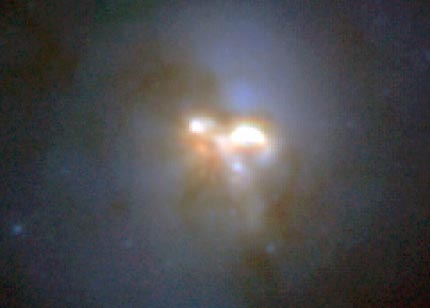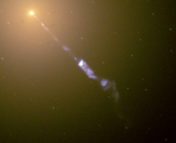Our new glossary of Galaxies and AGN

Arp220, one of the best nearby examples of a ULIRG. What's a ULIRG? Check our new galaxy glossary page! Picture credit: Rodger Thompson et al. HST/Nicmos via APOD
We’re starting a new section of Astrobites we’re calling “Glossaries” that are meant to be concise reference pages for a variety of astronomical subjects. We hope that these will be useful resources for anyone who’s ever had to wade through decades of literature just to find definitions to a few terms. You can find links to all of our glossaries in the menu at the top of the page.
The first of these glossaries, on Galaxies and AGN, is now available. This glossary contains brief descriptions of dozens of different types of galaxies, active galactic nuclei (AGN), and the most famous examples of each. I’ve been compiling this list for several months now, making an entry whenever I read a reference in a paper to a term I can’t quire remember. For each entry in the glossary, I’ve included links to papers and websites with more information.
We have lots of ideas for more subjects to compile glossaries for and you can expect to see more in the future! We’ll keep updating each glossary page indefinitely.
Leave a comment to let us know what you think of the addition of reference material to Astrobites and if there’s any subject you’d like to see included.





This is a great addition to astrobites.
Maybe eventually you can have a wiki, like AstroBetter’s Wiki (but for undergrads), as an organized home for all of astrobites’ reference material. So far it has all been very helpful. Thanks!
This is a fantastic resource for me to get it all in one place and then able to dig down
Wonderful idea for undergrads and amateurs. A suggestion might be to include an image to visually reinforce the definition if possible. That way you appeal to visual leathers as well.